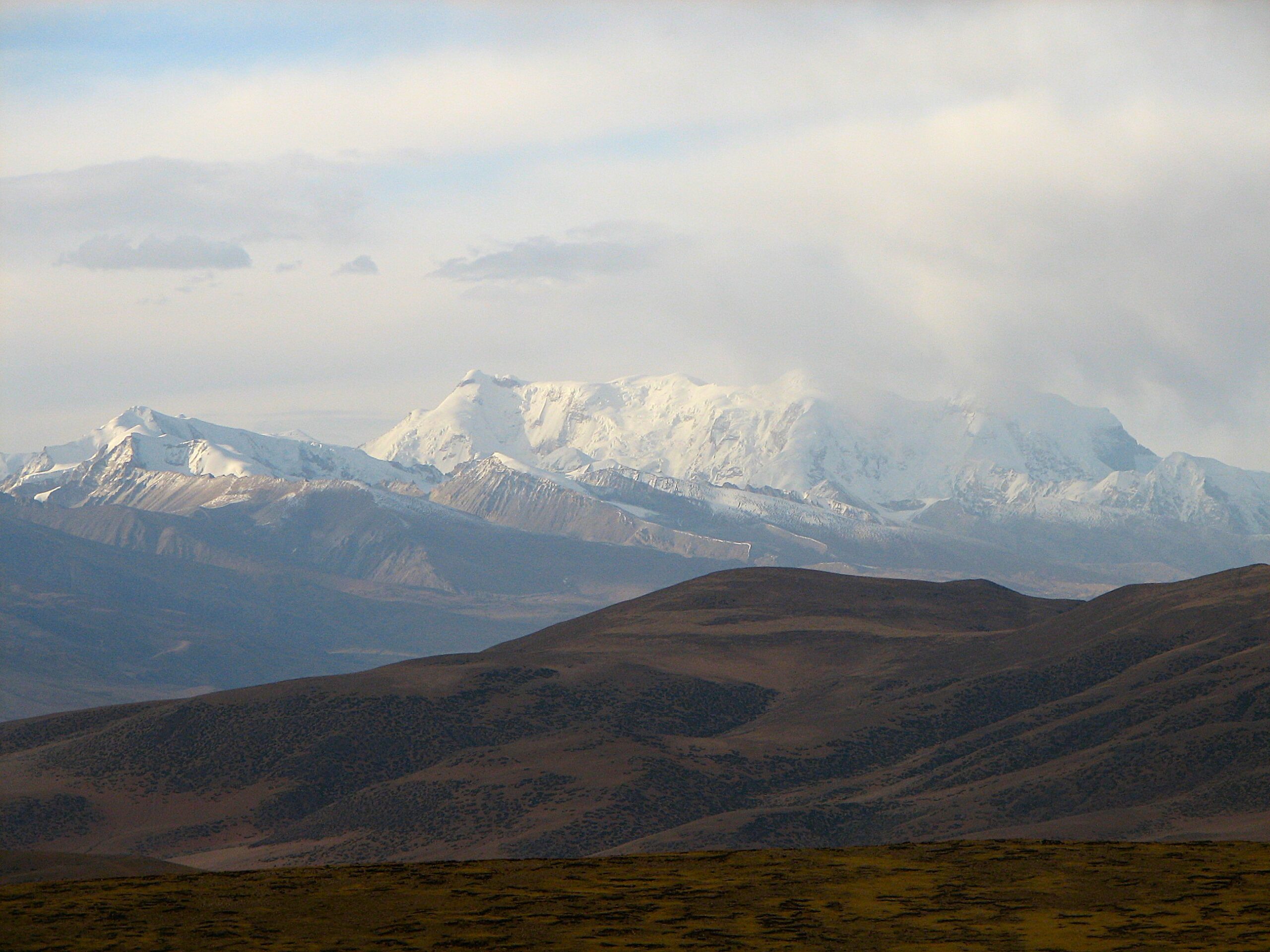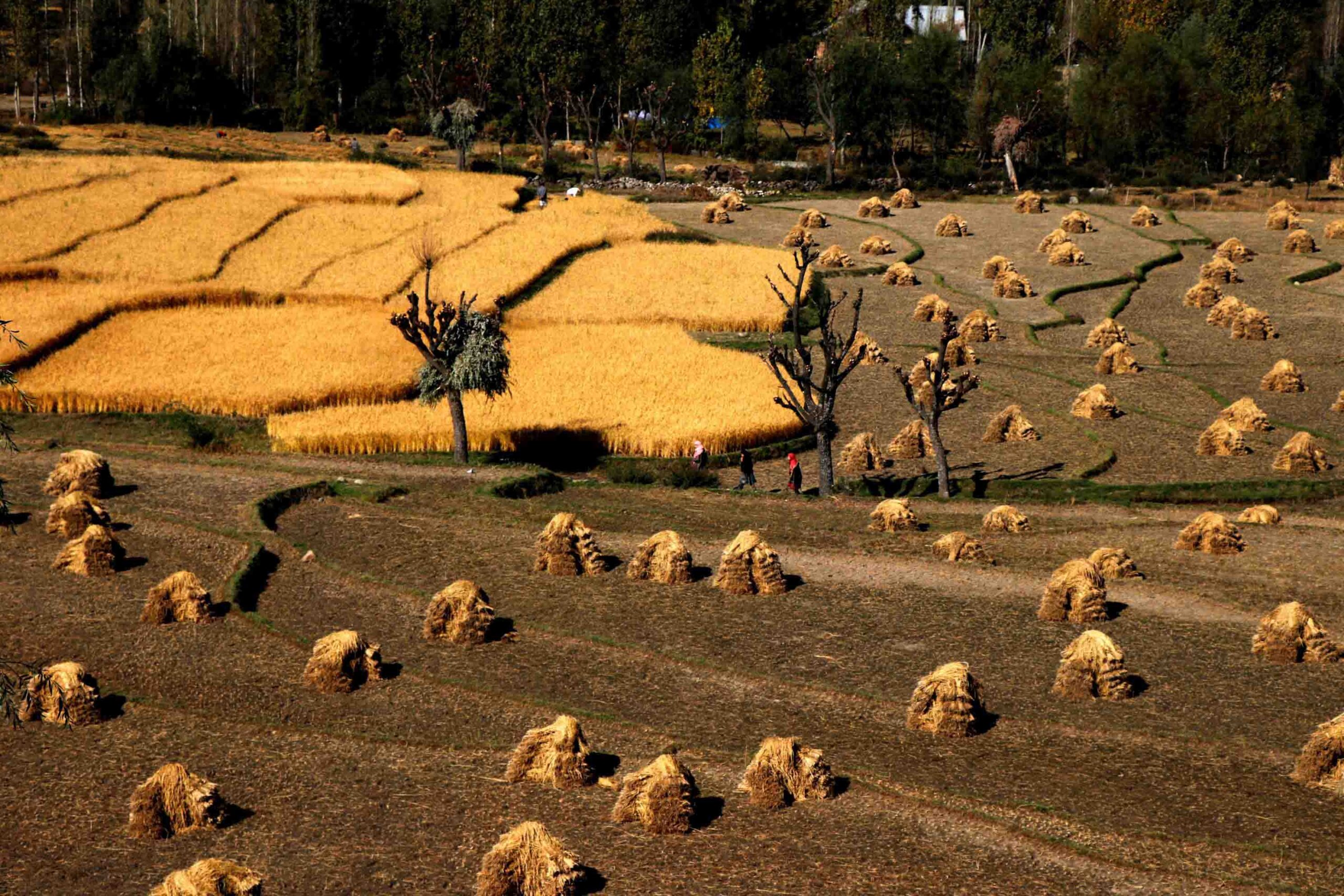
- Livestock farmers in Kashmir are dealing with fodder shortage, which is forcing them to sell their cattle or migrate their livestock to alpine pastures in search of fodder.
- Experts say that overgrazing, land use change, deforestation and climate impacts such as erratic weather, contribute to fodder shortage in the Kashmir region.
- While researchers are working on improved fodder crop varieties that have resistance to diseases and pests, and better adaptability to environmental conditions, hydroponic fodder cultivation can become an additional source.
Abdul Hamid, a farmer from Khag, an area in central Kashmir’s Budgam district, looks at his fields with growing despair. It’s not just the failing crops that trouble him; what worries him more is what follows — the growing shortage of fodder. For the first time in years, Hamid has been forced to sell some of his cattle. “I couldn’t feed them,” he says.
Across the Northwestern Himalayas, livestock farmers are grappling with a mounting crisis — fodder shortage. This scarcity is driven by shrinking grazing lands, increasing grazing pressure, degraded pastures, changing climate and the difficulty in procuring fodder seed.
During the summers, animals graze on alpine pastures and tree leaves found at higher elevations. For the rest of the year, they survive on whatever is available — orchard trimmings, roadside grasses, lower hill tree leaves, crop residues, and agroforestry produce.

According to the 2021 fodder resources development plan for Jammu and Kashmir, there is around a 49% fodder shortage in the region. It produces around 64 lakh metric tonnes (MT) of green fodder and 35 lakh MT of dry fodder annually. However the requirement of green fodder is 139.13 lakh MT and dry fodder is 58.53 lakh MT.
Hamid cultivates maize and kidney beans on his one-acre plot at an altitude of 2,500 metres. These crops not only feed his family but also support his livestock. “For example, maize is grown both for its grain and fodder. The maize stalks, locally called kand, are essential fodder. We dry and store them for the harsh winter,” he explains.
But the erratic weather patterns are impacting the crops. Over the past decade, Hamid has witnessed a steady decline in yields. “This year was no exception. The rain stopped during mid-May and didn’t return until July. The crops are entirely rainfed, and without timely rainfall, they just fail,” Hamid said. “These high-altitude crops have a short growing window and need rain every 15 days after germination. Even a small dry spell can be devastating.”
The impact is visible for other farmers in Khag and other districts of Kashmir too. “Ten years ago, I would harvest nearly 100 kilos of kidney beans. Now, I barely get 10 to 20 kilos,” Ghulam Rasool, another farmer from Budgam district echoes. “And with that drop, the amount of crop residue, such as dried pods and stems (straw) derived from it has also lessened,” he said.
Rasool also noted that wild grasses like brome grass (locally known as autus) and red clover (barseen) are typically mixed together to prepare straw. But now preparing straw has become difficult. “It takes several days for them to dry properly. Sometimes, there’s too much rain and the grass stays wet for too long. Other times, there’s no rain at all for days. On top of that, shrinking grasslands are leaving us with little to no natural fodder. This type of shortage is more than just an agricultural problem. It is threatening our livelihoods, animals, and a way of life passed down through generations,” the farmer said.
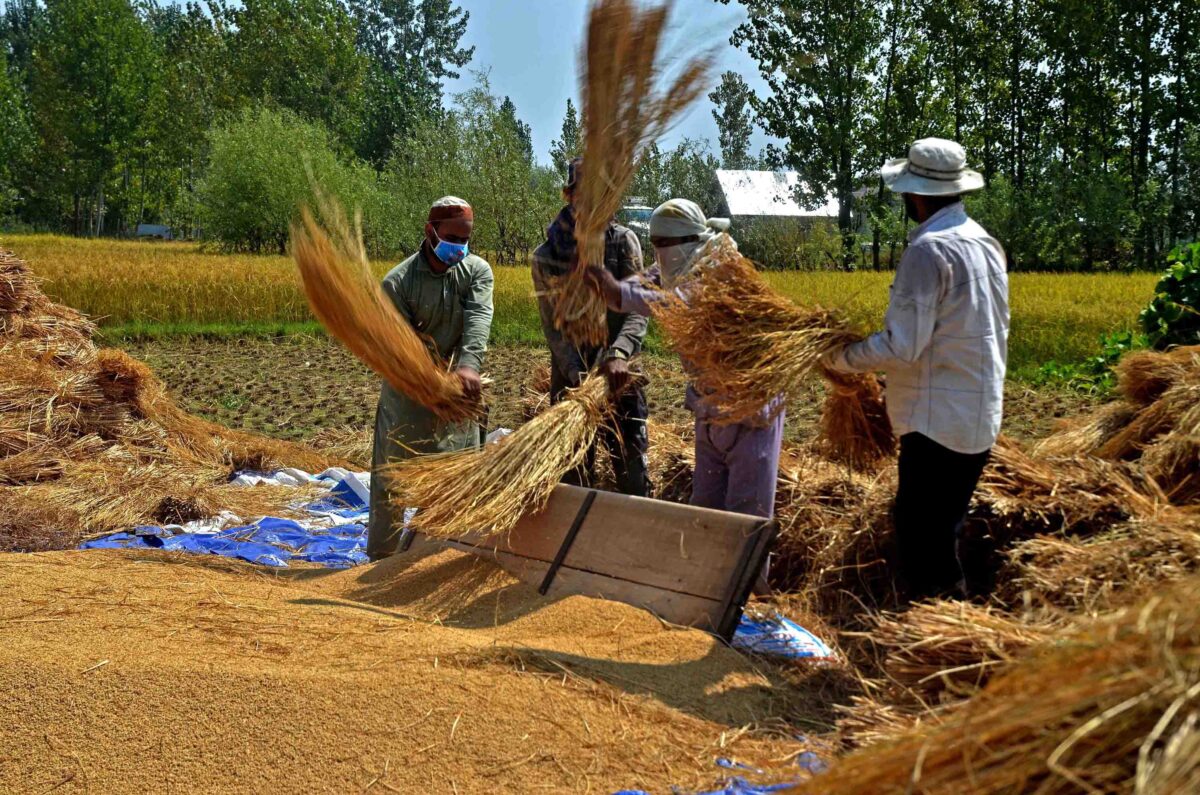
Key drivers of fodder scarcity
According to experts, the ongoing fodder crisis in the Kashmir region is the result of several factors. “One of the primary drivers is overgrazing, which depletes grasslands faster than they can regenerate. In addition, land use changes such as the conversion of forests and pastures into roads, tunnels, and other infrastructure projects are steadily shrinking the available grazing areas in the valley,” Farooq Ahmad Khan, chief scientist (Plant Physiology) at the Sher-e-Kashmir University of Agricultural Sciences and Technology of Kashmir (SKUAST-K) told Mongabay India.
Climate change further compounds the problem, with increasingly erratic rainfall patterns, prolonged dry spells, and extreme weather events disrupting crop cycles and the natural growth of fodder plants, he shared.
“Deforestation also plays a significant role by reducing natural vegetation cover, while the encroachment on wetlands also adds to the problem. For example, Hokersar, a prominent wetland and Ramsar site located in Srinagar once served as vital grazing grounds for cattle owners. However, in recent years, large portions of these wetlands have been converted into crop fields, significantly reducing the available space for livestock grazing,” Khan explained.
The conversion of traditional grasslands into agricultural land continues to limit the spaces where livestock can graze, he continued. “Together, these pressures are deepening the region’s fodder scarcity and placing an added burden on livestock-dependent communities.”
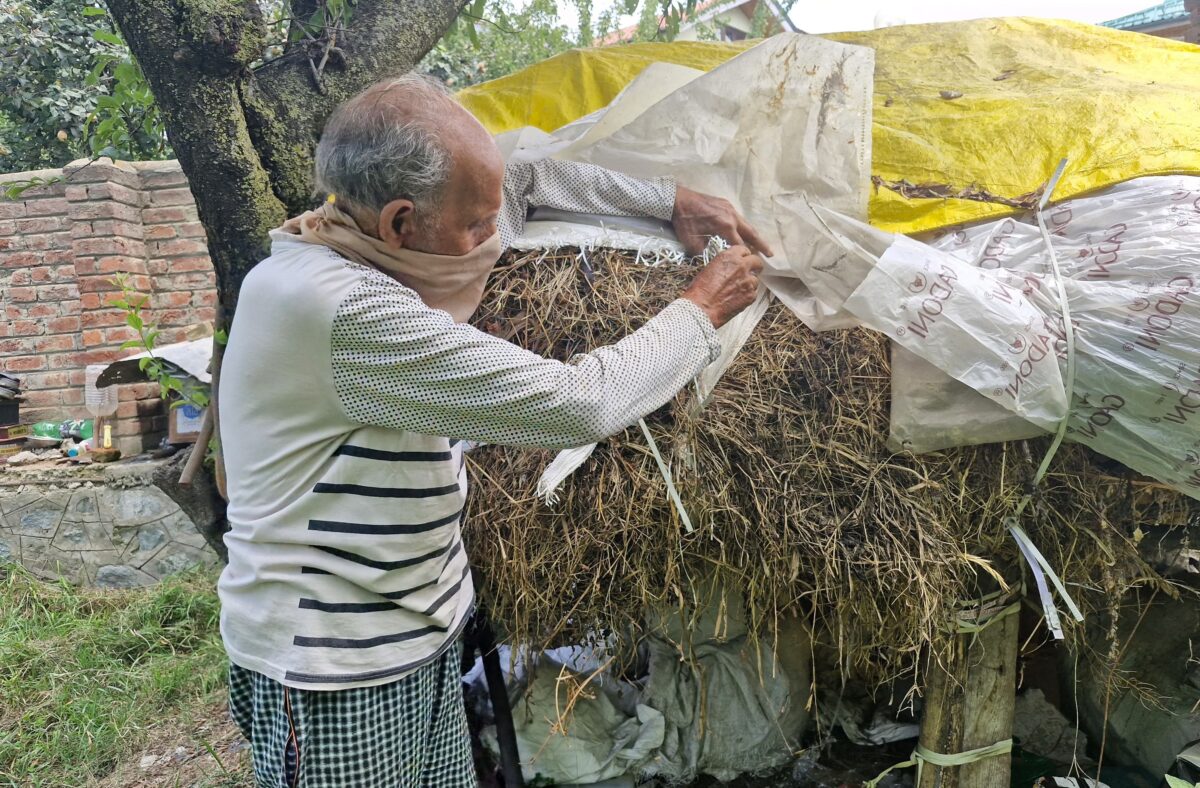
Implications of vanishing fodder sources
With the steady decline of natural grasses in the lower plains and sub-alpine regions, many cattle owners have begun migrating their livestock to alpine pastures in search of fodder. However, this shift is placing immense pressure on these fragile high-altitude ecosystems, pointed out Akhtar Malik, Junior Scientist at the Department of Botany, University of Kashmir.
The increased population of grazing animals in the alpine pastures leads to more competition for limited grass. “It also heightens the risk of forest fires due to the thinning of ground vegetation, and accelerates the degradation of alpine pastures — which are already less nutrient-rich due to the harsher climate. Such migration also results in nutritional imbalances in livestock, as grasses in these upper reaches lack the mineral diversity found in lower and mid-altitude meadows,” Malik said.
A recent study found that in the Northwestern Himalayas, grasses at higher elevations are richer in essential nutrients such as iron and protein, but can also cause mineral imbalances (such as copper deficiency) due to excessive molybdenum and iron. Meanwhile, lower-altitude fodder sources are severely deficient in sodium and other vital minerals. Similar nutrient deficiencies in fodder have been reported in Pakistan and China, especially in their hilly regions where grasses were found lacking in sodium, calcium, magnesium, zinc, manganese, cobalt, phosphorus, and selenium.
These nutrient imbalances can also be attributed to the growing threat of invasive plant species in Kashmir valley, many of which have spread due to changing agricultural practices and the introduction of non-native flora through floriculture, Malik stated. “The unchecked spread of these species disrupts the ecological balance, depletes soil nutrients, and significantly reduces both the quality and quantity of traditional fodder. To make matters worse, their reach is no longer limited to the plains — they are now advancing into sub-alpine regions. This in turn accelerates biodiversity loss and further compounds the fodder crisis,” he said.
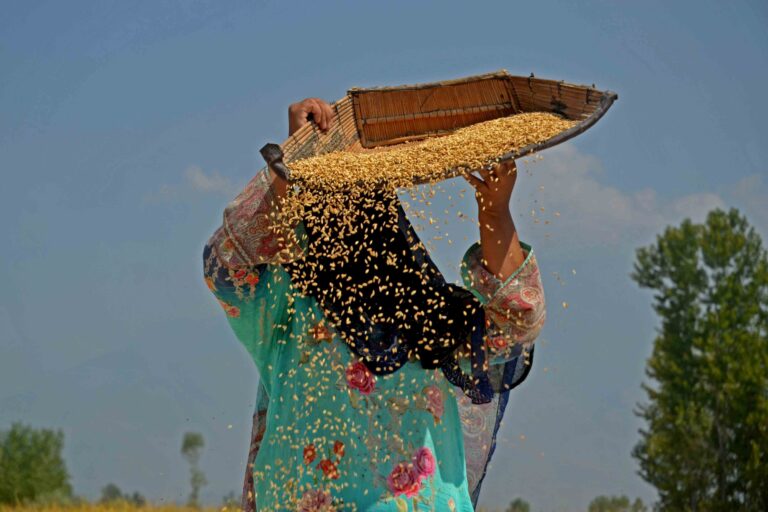
Understanding the bigger problem
Asif Bashir Shikari, Professor, Genetics and Plant Breeding, SKUAST Kashmir explained that “fodder seed availability” is a major challenge in the region. The fodder is usually harvested at a green stage to feed livestock before seed maturity takes place. “This eventually results in a fodder seed shortage. Currently, Jammu and Kashmir faces a 60% seed deficit across all crops, with over 90% deficit in fodder seeds. It creates a cycle where farmers cannot produce fodder simply because they lack access to viable seeds,” Shikari said.
To address this gap, crop residues serve as a critical source of fodder. “For instance, maize is harvested both for grain and fodder in its dried form. Similarly, straw derived from rice crop residue is commonly used as fodder. Other important fodder crops include oats and various cultivated grasses. In the legume category, crops like cowpea and alfalfa are highly valued due to their nutritional richness and ability to provide vital proteins,” he said.
At present, the university is working on developing improved varieties of fodder crops. While traditional varieties yield around 200 quintals per hectare, improved varieties which have enhanced genetic characteristics that exhibit desirable traits such as higher yields, increased resistance to diseases and pests, and better adaptability to environmental conditions like droughts, are under development and projected to yield 400-500 quintals per hectare, effectively doubling productivity. “Shalimar Fodder Maize-1 and Shalimar Fodder oats -3, 6, have already been released and show promise in terms of biomass. Efforts are currently underway to multiply and distribute these seeds to farmers,” Shikari added.
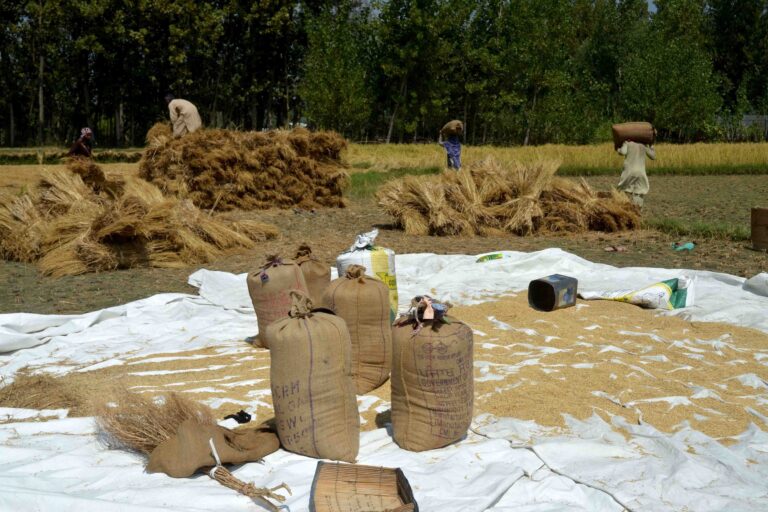
Solutions to consider
According to the experts, the cornerstone of sustainable fodder production is ensuring seed availability. “Without it, even the best farming techniques cannot take off. As a strategic approach, the cultivation of fodder seeds is being undertaken in the Jammu region. Last year, we produced approximately 300 quintals of foundation seed and supplied it to the Animal Husbandry department for further multiplication,” Shikari added.
An untapped opportunity lies in using orchard floors in the Kashmir region. Around 2,12,018 hectares in Kashmir valley’s ten districts are under the horticulture sector. “These spaces can be used to grow nutritionally-rich fodder crops that not only supplement feedstock but also enhance soil fertility. Farmers are often hesitant, fearing nutrient competition between trees and intercrops. However, integrating fodder crops that nourish the soil can strike a balance between productivity and sustainability,” Shikari explained.
Scientific interventions like hydroponic fodder cultivation are also being promoted as a way to address fodder challenges in the region. Hydroponics is the way of growing plants/crops in water without any soil, generally in controlled conditions/environment. In this method, water is generally enriched with or incorporated with a well-balanced formula of the nutrients that are essential for plant growth.
When asked about SKUAST Kashmir’s efforts to promote hydroponic fodder, Shikari clarified that it is not meant to replace traditional fodder, but rather to supplement it. “Hydroponics can be a great support system, especially for dairy farmers who have the space to set up such a facility. It saves up to 95% of water, requires minimal labour and ensures year-round availability of green fodder with improved digestibility. But it should be seen as an additional resource — not a substitute for conventional fodder sources,” Shikari added.
Read more: Revolutionising dairy farming with hydroponic fodder amidst a fodder shortage
Banner image: A view of paddy fields during harvest in Srinagar. Image by Bilal Bahadur.



